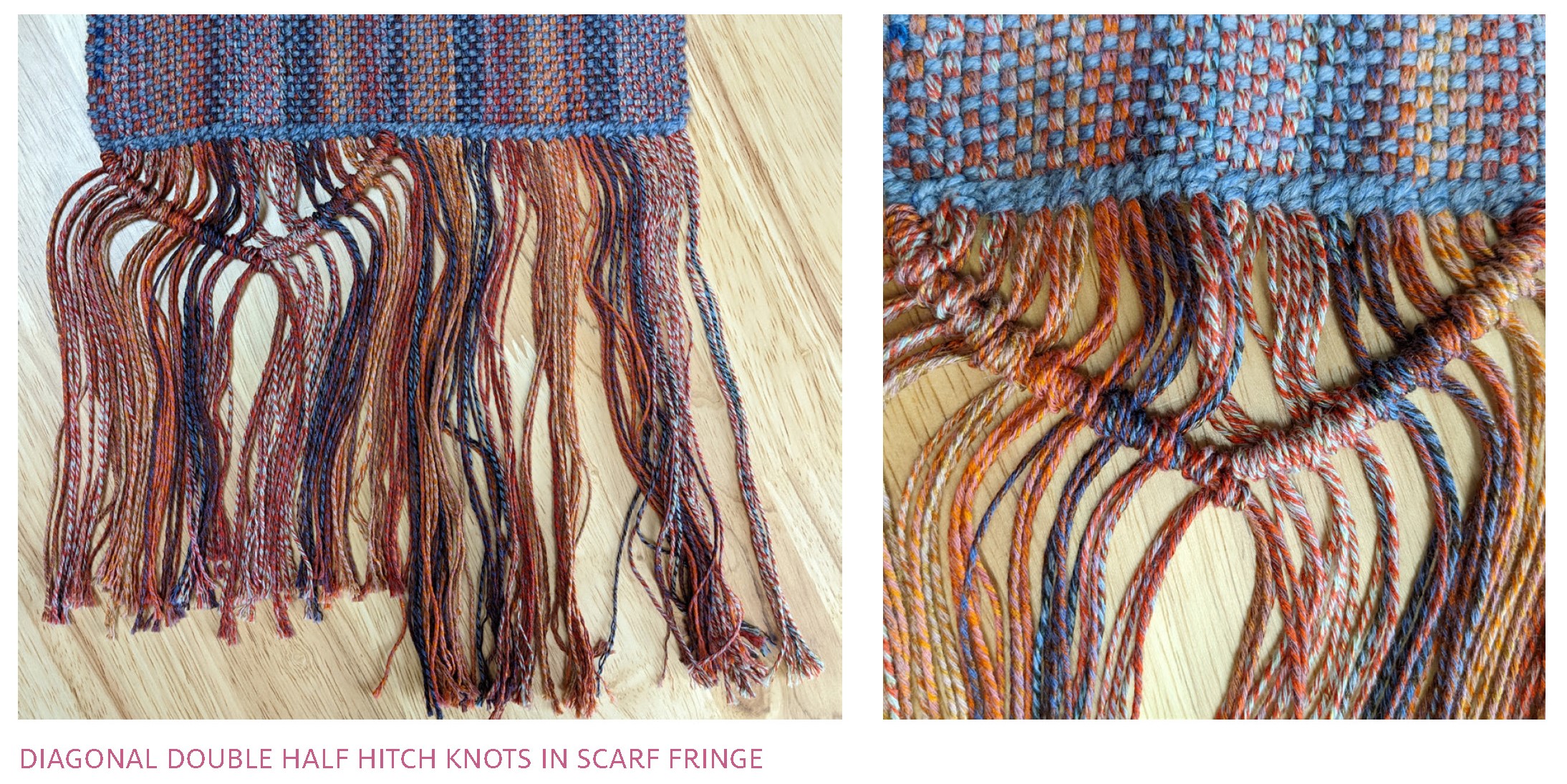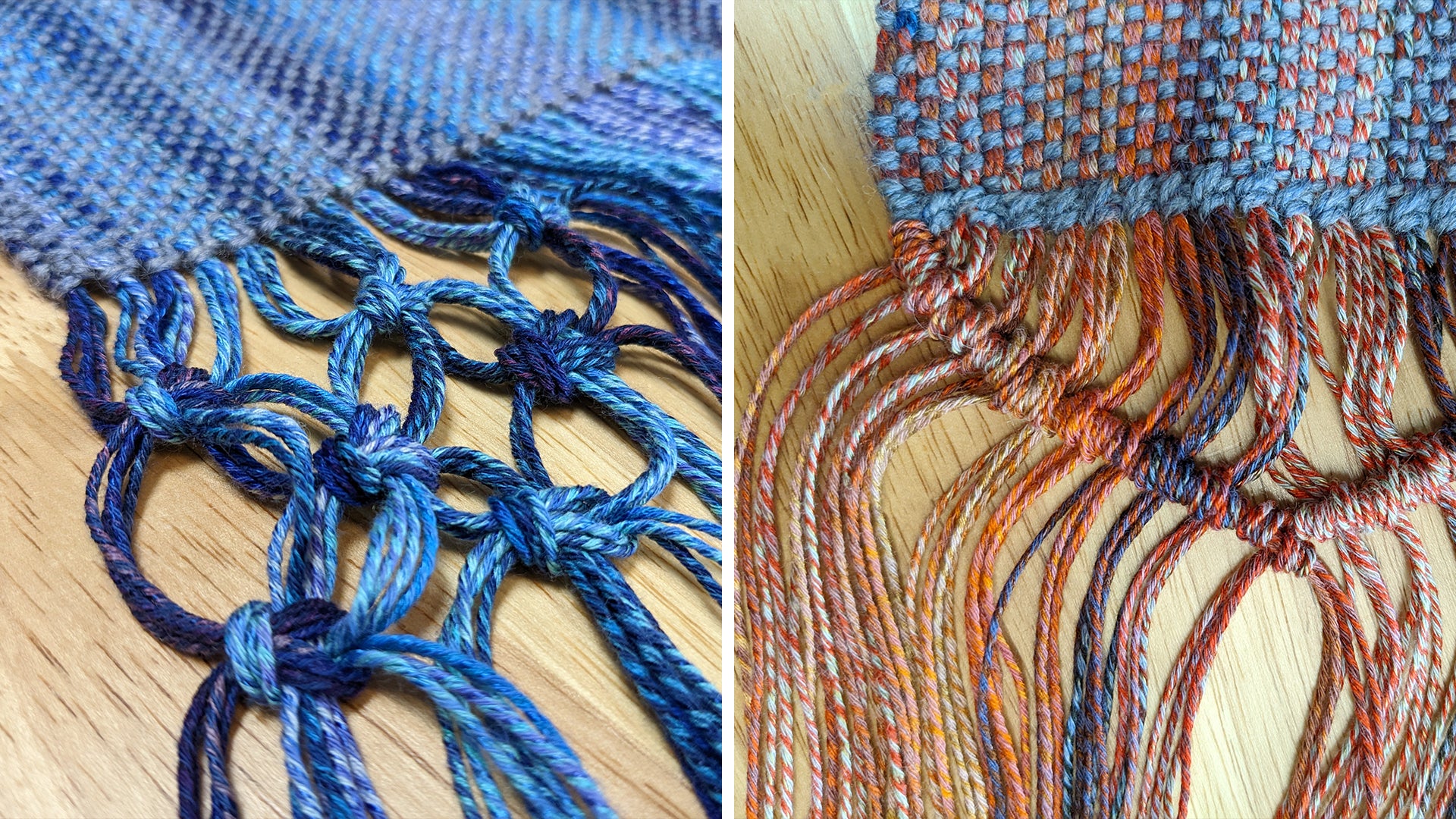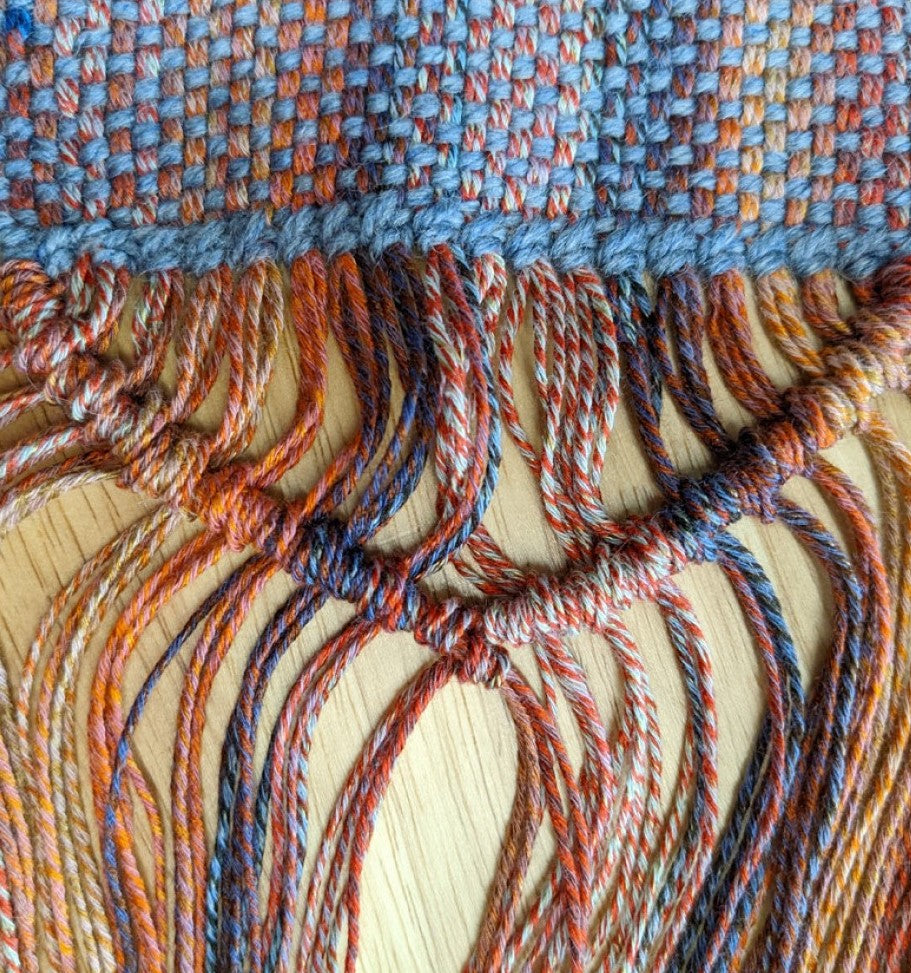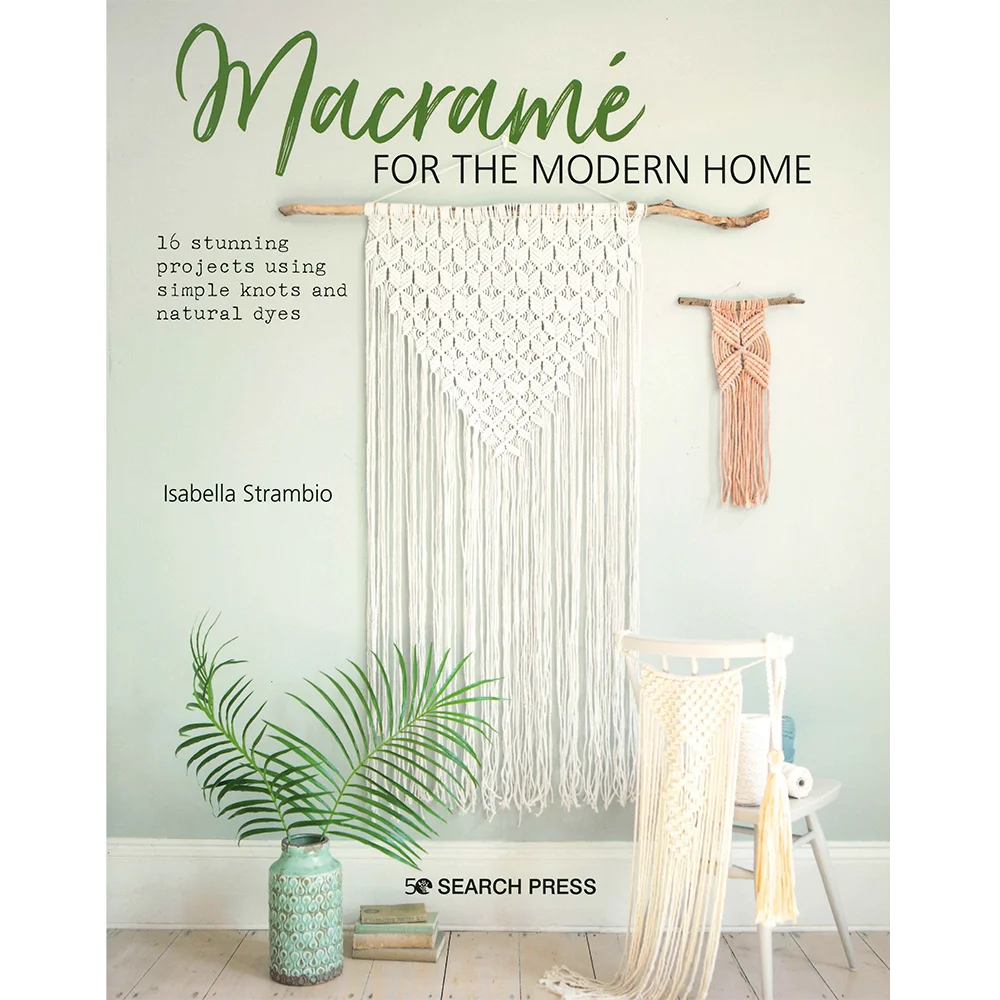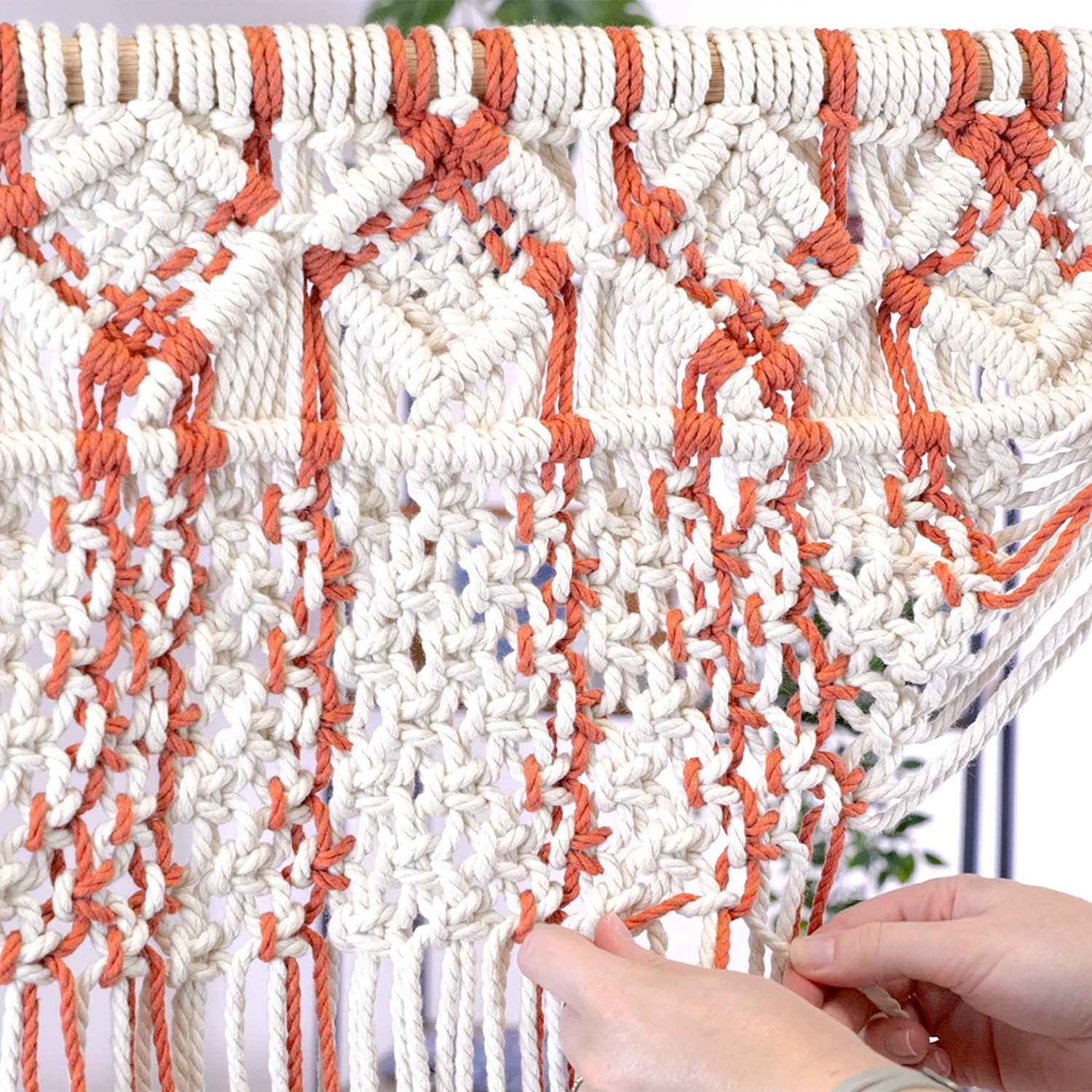Macramé In Weaving
By Mackenzie Keller
Macramé is an art form that uses knots to create patterns and textiles. The same knots used in macramé can be incorporated into your weaving projects. Multiple knots can embellish the fringe on a scarf or shawl.
You can learn how to tie these knots in my online course, Beginner Macramé, on the online Schacht School of Textile Arts. Here we'll explore using barrel knots, square knots, and double half hitch knots in the fringe of your weaving projects.
Note: Square knots and barrel knots make fringe shorter and uneven, while diagonal double half hitch makes fringe shorter but mostly even. The filler cord in your double half hitch lines will be a little shorter than the rest. Make sure you leave extra fringe length so you can trim as much as you need to.
What You'll Need
-
long fringe on a weaving
Directions
Barrel Knot
This one is easy. A barrel knot is basically an overhand knot with extra wraps that create a fuller knot. A barrel knot instead of an overhand knot at the end of twisted or braided fringe can add some weight to the strand. Or, a barrel knot with 3 wraps can create some interest at the end of a thicker, single strand of fringe that would otherwise have little movement.
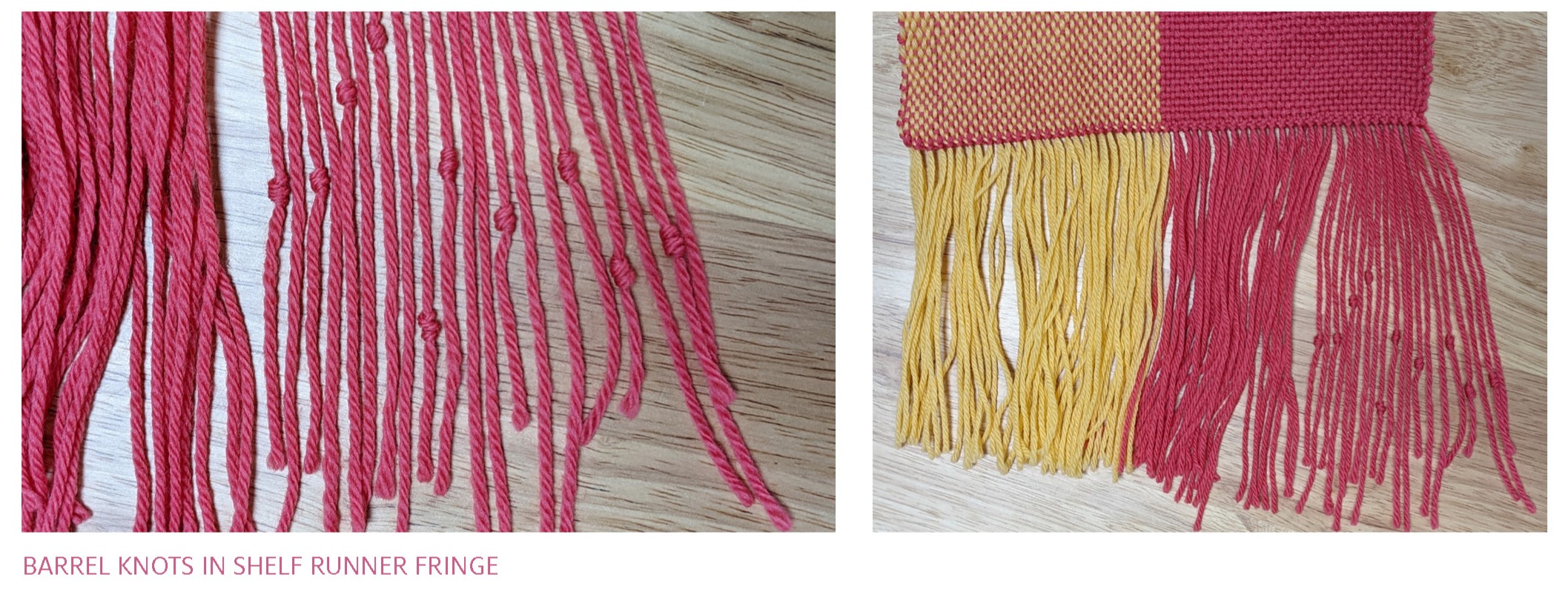
Square Knot
Square knots can be used in place of overhand knots for a more decorative look in lattice fringe. I used hemstitching groups as my “cords” and made staggered square knots. I think the square knots almost look like butterflies.
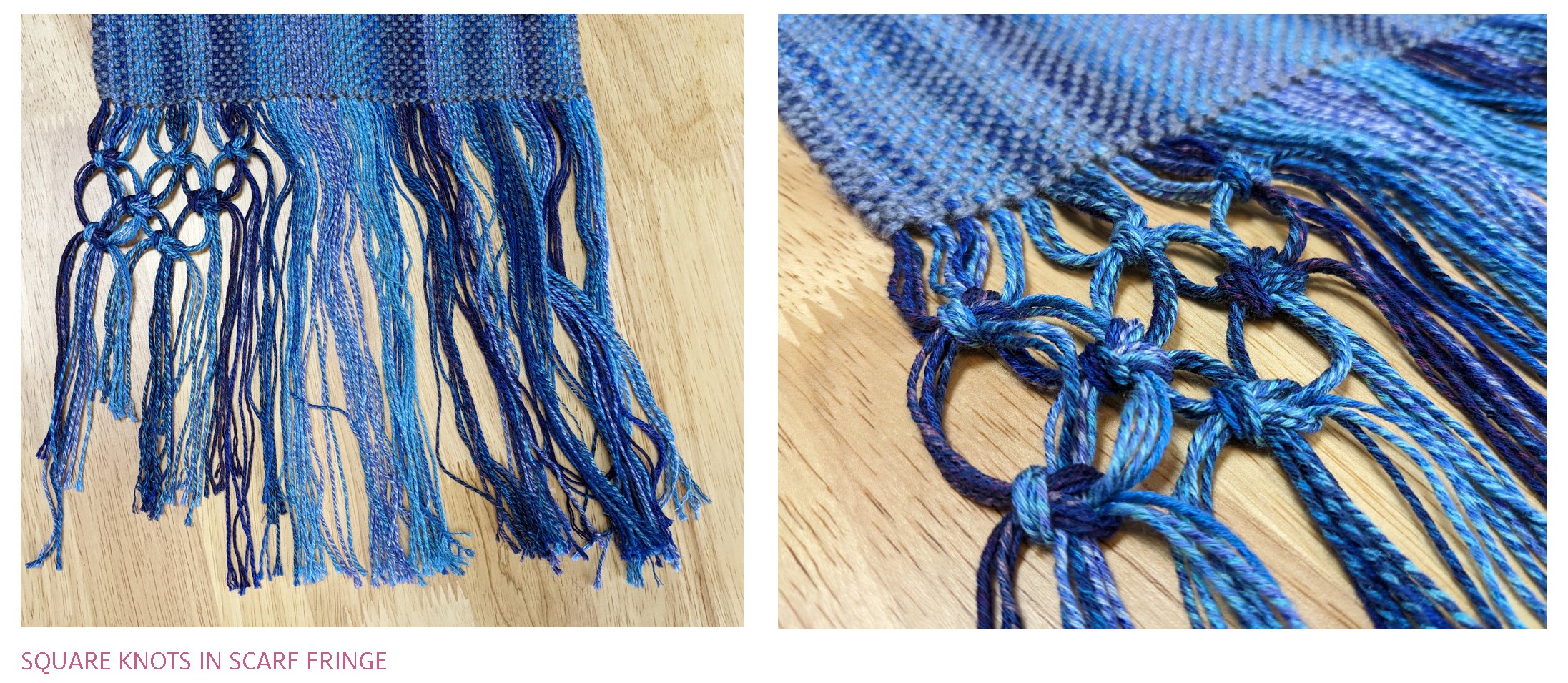
Double Half Hitch Knot
I used two diagonal lines of double half hitch knots to make a downward-facing triangle in fringe. You could make two triangles next to each other, and then continue connecting diagonal lines in any pattern. I think this would be particularly cool along the bottom of a shawl. Again, I used hemstitching groups as my “cords.”
